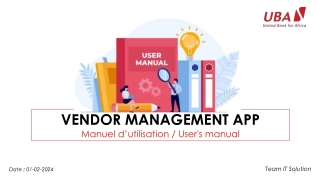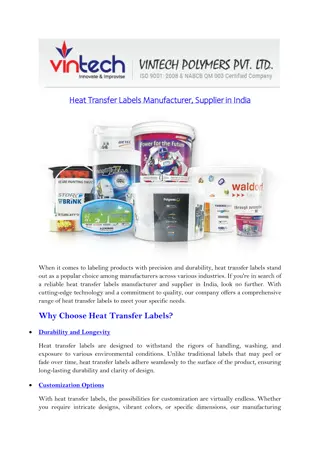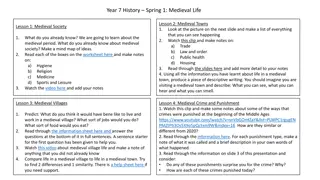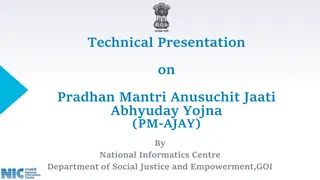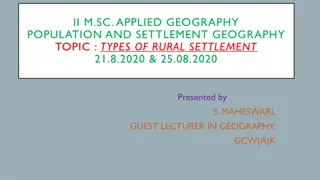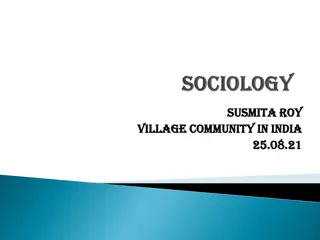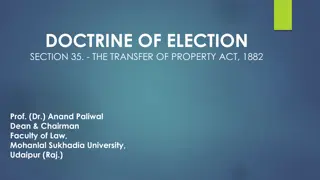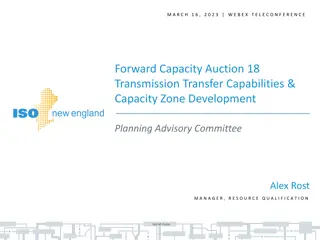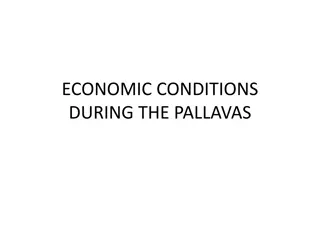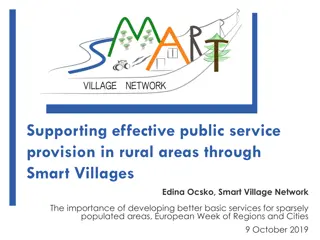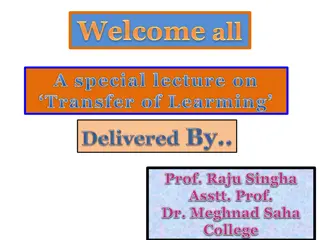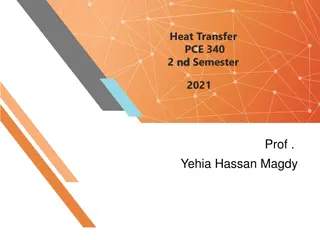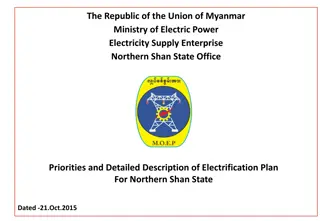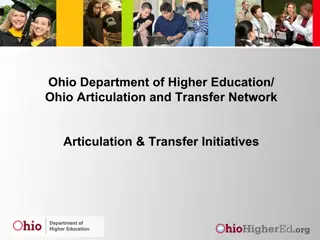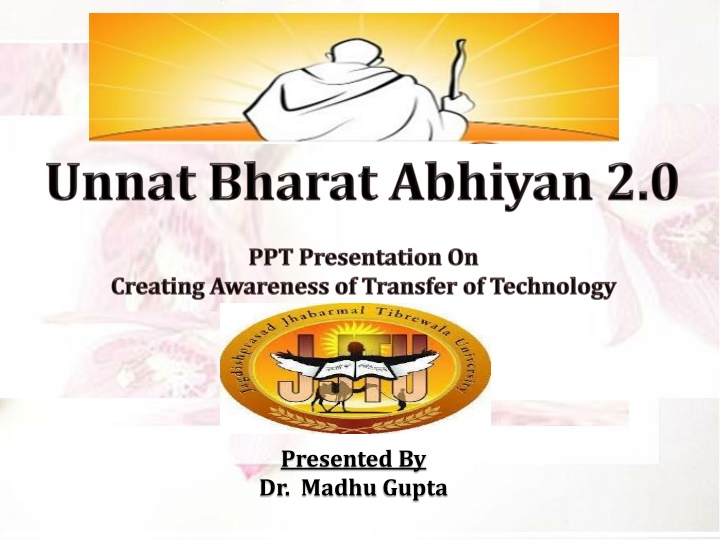
Innovative Technology Transfer Strategies for Entrepreneurs
Explore the process of technology transfer, from research to commercial applications. Learn about the crucial functions, implementation methods, emerging technologies, and objectives of creativity and innovation. Discover how to effectively link technology users and developers, nurture entrepreneurship, and promote intellectual property awareness.
Download Presentation

Please find below an Image/Link to download the presentation.
The content on the website is provided AS IS for your information and personal use only. It may not be sold, licensed, or shared on other websites without obtaining consent from the author. If you encounter any issues during the download, it is possible that the publisher has removed the file from their server.
You are allowed to download the files provided on this website for personal or commercial use, subject to the condition that they are used lawfully. All files are the property of their respective owners.
The content on the website is provided AS IS for your information and personal use only. It may not be sold, licensed, or shared on other websites without obtaining consent from the author.
E N D
Presentation Transcript
Presented By Dr. Madhu Gupta
CONTENT Introduction TT Function Implementation Emerging Technology Objective TT depends on 5 factors Technology Transfer Processes Scope of area
Introduction Technology transfer is the process by which basic science research and fundamental discoveries are developed into practical and commercially relevant applications and products. Technology Transfer personnel evaluate and manage invention portfolios, oversee patent prosecution, negotiate licensing agreements and periodically review cooperative research agreements already in place. Part of the technology transfer process involves the prosecution of patents which is overseen by the national Patent and Trademark Office. Individuals with advanced degrees in the biomedical sciences are needed to review and process patents in the biotechnology field.
TT Function TT technology users and developers, between researchers and manufactures is an important element of technology transfer. TT Function: Nurture A main ingredient for moving technology from a research laboratory to a new business enterprise successfully is an environment that is supportive of entrepreneurship. TT Function: Link Cataloging resources related to business enterprises and entrepreneurs/researchers developers to outside groups and organizations which can help in the process of starting new products, companies etc. Function: Coordinate Coordinating between connecting and would-be technology other
Emerging Technology An Innovative Technology is a technology that has been field-tested and applied to a hazardous waste problem at a site, but lacks a long history of full-scale use. Information about its cost and how well it works may be insufficient to support prediction of its performance under a wide variety of operating conditions. An Established Technology is a technology for which cost and performance information is readily available. Only after a technology has been used at many different sites and the results fully documented is that technology considered established.
Objectives Of Creativity & Innovation To offer guidance and assistance to inventors and corporations in matters of intellectual property To provide a meeting place for inventors and entrepreneurs to come together to exchange names and information To provide a hands-on learning opportunity to gain experience in dealing with "real-world" aspects of intellectual property law practice To increase the general awareness of intellectual property and its increasing importance as we further move into the Information Age
TT Depends on 5 factors Technical Development Regulatory Clearance Manufacturing Requirements Market Development Financial Feasibility
Technology Transfer Processes Technology Promotion Technology Deployment Technology Innovation Technology Development Technology Research Technology Assessment Technology Information and communication Technology Investment Technology Collaboration Technology Commercialization
Scope of Area Agriculture sector Organic Science Manufacturing industries Medicinary innovation Hospitality sector Education sector Engineering sector Transportation Sector Warehousing and distribution sector Financial Service sector

